Christina Y. K. Kwok[1]
Introduction
The Supreme Court and the Court of Appeals for the Federal Circuit have long grappled with the scope of patent eligibility, especially with the patent eligibility of so-called “business methods”.
Previously, the Supreme Court in Mayo reversed a Court of Appeal’s decision and held patent claims invalid for claiming underlying laws of nature.[2] Later in Alice, the Court reaffirmed its precedent on the patent-ineligibility of merely abstract ideas, specifically, that “if a patent’s recitation of a computer amounts to mere instruction to ‘implement’ an abstract idea ‘on…a computer,’ that addition cannot impart patent eligibility.”[3] These two Supreme Court cases established the Mayo/Alice test for determining the scope of patent eligible claims. The Court did, however, leave open some questions of the patent eligibility of technological improvements and business methods by suggesting that “claims ‘purport[ing] to improve the functioning of the computer itself,’ or ‘improv[ing] and existing technological process’ might not succumb to the abstract idea exception.”[4]
Recently, however, the Court of Appeals appears to have resolved the uncertainty, considering whether certain software improvements can be patent eligible inventions and, if so, what guidelines would help determine the scope of patent eligibility. In Enfish v. Microsoft, the Court of Appeals re-confirmed the Mayo/Alice test, and went a step further by clarifying the scope of patent eligible subject matter.
Enfish v. Microsoft
In 2012, Enfish, LLC sued Microsoft Corporation for infringement of two Enfish patents.[5] Enfish alleged that Microsoft’s ADO.NET infringed Enfish’s patents for a “self-referential” database because ADO.NET’s interface “creates and manipulates self-referential tables as part of its operation.”[6] Microsoft®[7] countered alleging that Enfish’s patents claims were invalid.
One notable claim at issue, claim 17 of the ‘775 Enfish patent, reads:
A data storage and retrieval system for a computer having a memory, a central processing unit and a display, comprising: means for configuring said memory according to a logical table, said logical table including: a plurality of cells, each said cell having a first address segment and a second address segment; a plurality of records, each said attribute set including a series of cells having the same second address segment, each said attribute set including an object identification number (OID) to identify each said attribute set; a plurality of records, each said record including a series of cells having the same first address segment, each said record including an OID to identify each said record; and means for indexing data stored in said table.[8]
The United States District Court for the Central District of California found all Enfish patent claims ineligible under 35 U.S.C. §101.[9] On appeal, the Court of Appeals reversed the district court’s summary judgment in part, vacated in part, and remanded in part.[10]
Court of Appeals Analysis
In its analysis, the Court of Appeals refused to read Alice “so broadly,” stating there is “no reason to conclude that all claims directed to improvements in computer-related technology, including those directed to software, are abstract…”.[11] The Court of Appeals noted the Supreme Court had stated that “an invention is not rendered ineligible for patent simply because it involves an abstract concept” and that previous attempts to patent software were thwarted because the “claims at issue amount[ed] to ‘nothing significantly more’ than an instruction to apply the abstract idea…using some unspecified, generic computer.”[12] In its opinion, the court asserted that “[s]oftware can make non-abstract improvements to computer technology just as hardware improvements can, and sometimes the improvements can be accomplished through either route.”[13] It concluded that a majority of computer-related technology should not automatically be categorized as “abstract” and pushed aside in step one of the Mayo/Alice test, while only a few passing this hurdle may be considered in step two of the Mayo/Alice test.[14]
The existing Mayo/Alice test that the court had applied is a two-step test for patent eligibility established by the Supreme Court. The first step is to “determine whether the claims at issue are directed to a patent-ineligible concept.”[15] The step one inquiry is to filter claims, “in light of the specification, based on whether ‘their character as a whole is directed to excluded subject matter.’” [16] If the claims do not pass the first inquiry, or fall into one of the categories of “abstract ideas,” then step two is to “consider the elements of each claim both individually and ‘as an ordered combination’ to determine whether the additional elements ‘transform the nature of the claim’ into a patent-eligible application” and do not remain abstract ideas.[17]
The Court of Appeals ultimately resolved whether to apply step one or step two of the Mayo/Alice test to the Enfish claims by asking “whether the focus of the claims is on specific asserted improvement in computer capabilities (ie., the self-referential table for a computer database) or, instead, on a process that qualifies as an ‘abstract idea’ for which computers are invoked merely as a tool.”[18]
After a close examination of claim 17 of the ‘604 patent and the district court’s ruling, the Court of Appeals concluded that certain of the “Enfish claims” were patent eligible and “are directed to a specific improvement to the way computers operate, embodied in the self-referential table.”[19] Further, the court refused to describe the “claims at such a high level of abstraction and untethered from the language of the claims.”[20] It warned that defining the claims at such high level of abstraction “ensure[s] that the exceptions to §101 swallow the rule.”[21]
The court’s decision also concluded that the “improvement of an existing technology is bolstered by the specification’s teachings that the claimed invention achieves other benefits over conventional databases, such as increased flexibility, faster search times, and smaller memory requirements.”[22] It differentiated the Enfish claims from the claims in Alice and Versata, which could “readily be understood as simply adding conventional computer components to well-known business practices”[23] In contrast, the Enfish claims are “directed to a specific improvement to computer functionality.”[24]
Lastly, even though the court did not reach step two of the Mayo/Alice test, it did recognize that should the question arise, courts should analyze “whether there are arguably concrete improvements in the recited computer technology [that] could take place under step two.”[25]
Conclusion
In reaching its conclusion in Enfish, the Court of Appeals goes a step further than the Mayo/Alice test and acknowledges the viability of software as well as other improvements in computer-related technologies as not necessarily “inherently abstract.”[26] The question to ask in determining if the software improvements for so-called business methods passes step one of the Mayo/Alice is “whether the focus of the claims is on a specific asserted improvement in computer capabilities or, instead, on a process that qualifies as an ‘abstract idea’ for which computers are invoked merely as a tool.”[27]
[1] The information contained in this article does not constitute legal advice or legal opinion, but has been prepared for general information purposes only. Any opinions expressed in this article shall not be construed to represent the legal opinion of this firm, its attorneys or any of its clients. The receipt of this article does not create an attorney-client relationship. ©2017 Wyatt & Associates, LLP.
[2] See Mayo Collaborative Services v. Prometheus Laboratories, Inc., 566 U.S. __, 132 S. Ct. 1289, 1293 (2012) (“‘[l]aws of nature, natural phenomena, and abstract ideas’ are not patentable”).
[3] See Alice Corporation Pty. Ltd. v. CLS Bank International et. al., 573 U.S. __, 134 S. Ct. 2347, 2358 (2014) (“Stating an abstract idea ‘while adding the words ‘apply it’ is not enough for patent eligibility. Nor is limiting the use of an abstract idea ‘to a particular technological environment. Stating an abstract idea while adding the words ‘apply it with a computer’ simply combined those two steps, with a deficient result.”).
[4] Enfish, LLC v. Microsoft Corporation, 822 F.3d 1327, 1335 (Fed. Cir. 2016).
[5] Id. at 1330.
[6] Enfish, LLC, 822 F.3d 1327, 1333 (Fed. Cir. 2016); see also ADO.NET Overview, at https://msdn.microsoft.com/en-us/library/h43ks021(v=vs.110).aspx (“ADO.NET provides consistent access to data sources and data-sharing consumer applications to connect data sources. ADO.NET allows users to connect to a database and manipulate data into individual or interdependent components.”).
[7] Microsoft® is a registered trademark of Microsoft Corporation. Wyatt & Associates, LLP is not associated with Microsoft Corporation.
[8] U.S. Patent 6,163,775 (issued December 19, 2000) (emphasis added).
[9] 35 U.S.C.§101 (1999) (“Whoever invents or discovers any new and useful process, machine, manufacture, or composition of matter, or any new and useful improvement thereof, may obtain a patent therefor, subject to the conditions and requirements of this title.”).
[10] See Enfish, LLC, 822 F.3d 1327, 1330 (Fed. Cir. 2016).
[11] Id. at 1335.
[12] Alice Corporation Pty. Ltd., 134 S. Ct. 2347, 2354, 2360 (2014).
[13] See Enfish, LLC, 822 F.3d 1327, 1335 (Fed. Cir. 2016).
[14] Id. (seeing “no reason to conclude that all claims directed to improvements in computer-related technology, including those directed to software, are abstract and necessarily analyzed at the second step of Alice, nor…[does] Alice so directs.”).
[15] Id. at 1334.
[16] Id. at 1335 (re-affirming the Court’s decision in which patent ineligible subject matter includes laws of nature, natural phenomena, and abstract ideas).
[17] Id. at 1334.
[18] Id at 1335-1336.
[19] Id at 1336-1337 (“The district court concluded that the claims were directed to the abstract idea of ‘storing, organizing and retrieving memory in a logical table,’ or more simply, ‘the concept of organizing information using tabular formats.”).
[20] Enfish, LLC, 822 F.3d 1327, 1337 (Fed. Cir. 2016).
[21] Id. (noting from previous cases that it would “tread carefully in construing this exclusionary principle” and cautioned “overgeneralizing claims” in making all patents unpatentable.).
[22] Id.
[23] Id. at 1338. (re-affirming the Supreme Court’s ruling in Versata that claims are not patent eligible when the computer “perform[s] ‘purely conventional’ steps to carry out claims directed to the abstract idea….).
[24] Id. (“[t]he claims are directed to a specific implementation of a solution to a problem in the software arts.”).
[25] Id. at 1339.
[26] Id at 1335.
[27] Id. at 1336 (emphasis added).
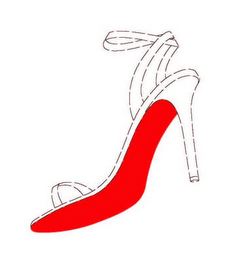
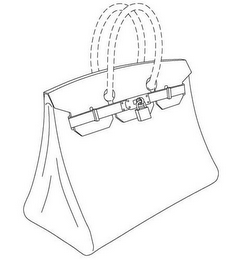
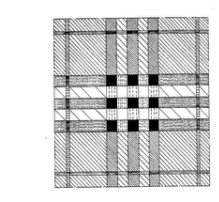
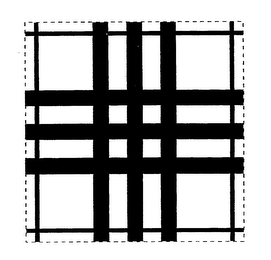
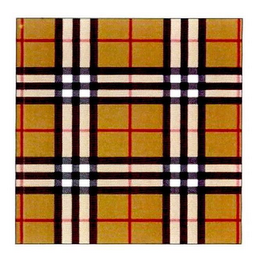
Recent Comments